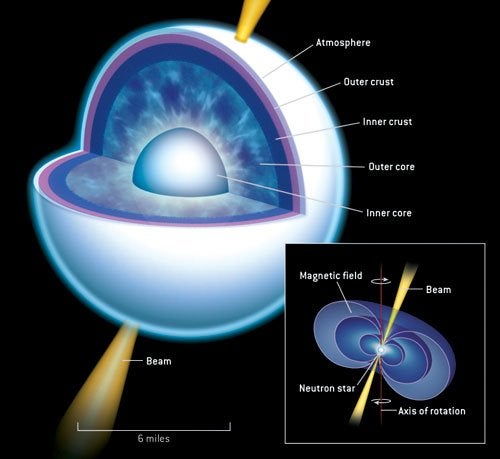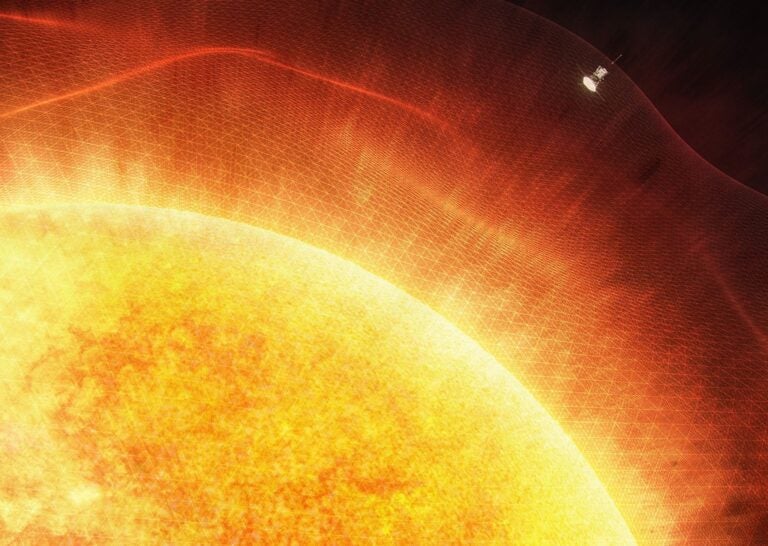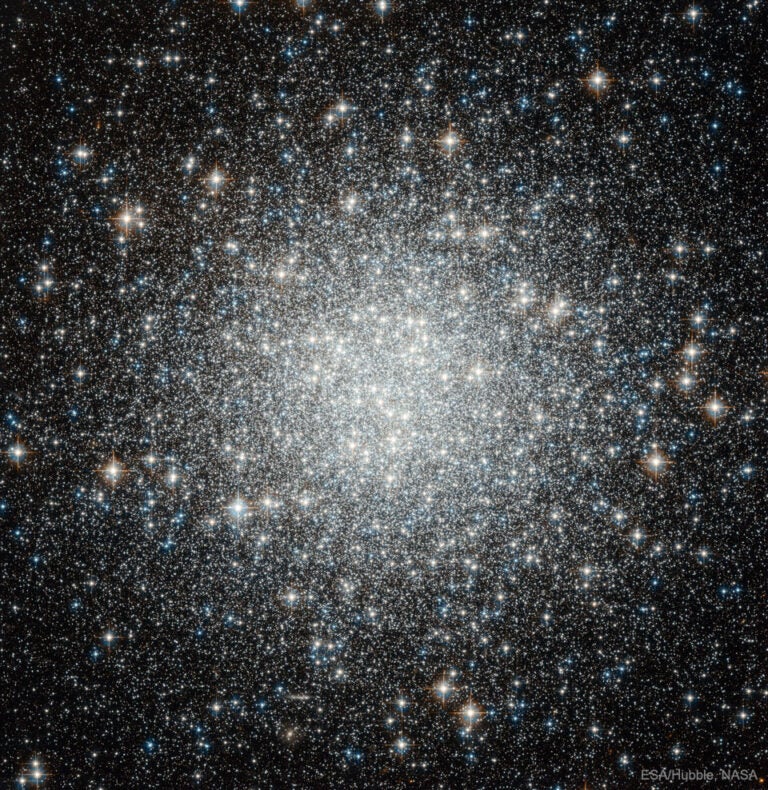Although it is true that neutron stars have, for the most part, consumed all their internal thermonuclear fuel, they tap into other energy sources to produce light. Indeed, neutron stars are remarkably “resourceful” and employ a variety of physical mechanisms to make themselves visible.
A newborn neutron star is incredibly hot — it is, after all, the surviving core of a star that has just collapsed and exploded as a supernova. Gravitational energy released during the star’s collapse represents almost 10 percent of its rest-mass energy. For comparison, the fusion of hydrogen to helium releases less than 1 percent of the rest-mass energy of the particles involved. Thanks to this efficient release of gravitational energy, the temperature at the center of a newborn neutron star can reach 500 billion kelvins.
The neutron star loses most of this energy in a matter of minutes, as neutrinos race from the star’s core. The remaining energy radiates slowly from the star’s surface. Even after a million years, the surface temperature of a neutron star can be several hundred thousand kelvins. An object this hot will shine mostly in the extreme-ultraviolet and soft-X-ray regions of the electromagnetic spectrum, but it will radiate visible light as well.
So neutron stars can be thought of as glowing embers, slowly dissipating the heat generated when they formed. Just how fast they cool depends on the physical properties of their interiors. By measuring neutron-star surface temperatures and ages, astrophysicists hope to learn about the exotic physics occurring within them. One object that has a lot to tell us is RX J1856-3754, an isolated neutron star some 560 light-years away in the southern constellation Corona Australis. As the closest and brightest neutron star known with emissions dominated by heat-flow, RX J1856-3754 allows astronomers a unique opportunity to study, in effect, its bare surface.
Rotation offers another energy source for neutron stars. They spin rapidly at birth because the collapsing pre-supernova star “spins up” — much as a spinning ice skater does when she pulls in her arms. Think of the neutron star as a massive flywheel, storing an enormous amount of rotational energy. It’s likely neutron stars also are born magnetized. With both a strong magnetic field and fast rotation, a neutron star produces strong electromagnetic currents that can accelerate charged particles to high speeds, producing radiation over a broad range of wavelengths, including light.
The pulsar at the heart of the Crab Nebula, which spins on its axis about 30 times each second, is the most famous example of a fast-spinning, magnetized neutron star. But the Crab pulsar is steadily slowing down by about 13 nanoseconds every year. This miniscule change in its rotational period amounts to a loss of far more energy than we observe as visible light from the pulsar, although astronomers debate just how rotational energy is converted into light.
Some neutron stars do produce energy by thermonuclear fusion on their surfaces. This happens in close binary systems where matter flows from a normal star to a neutron star, a setup responsible for some of the brightest X-ray sources in the sky. The donor star supplies material rich in hydrogen and helium, which becomes heated and compressed as it piles up in a layer on the neutron star’s surface.
Eventually, the density and temperature of this layer become high enough to trigger a thermonuclear runaway. In seconds, light elements fuse into a complex mix of heavy elements and, in the process, release a prodigious amount of energy — the equivalent of more than one hundred 15-megaton thermonuclear bombs exploding over every square centimeter of the neutron star’s surface. The explosion heats the star’s surface to several billion kelvins. Astronomers call such events X-ray bursts.
About 80 X-ray-bursting neutron stars are known in our galaxy; each can erupt several times a day. A burst radiates most of its energy as X rays and a small fraction as light. But the X rays shine on both the accretion disk and the companion star, heating them strongly and increasing the total light we see coming from the binary. By studying simultaneously the X-ray and optical signals, astronomers can deduce the size and distribution of matter within the binary system. — TOD STROHMAYER, GODDARD SPACE FLIGHT CENTER, GREENBELT, MARYLAND










